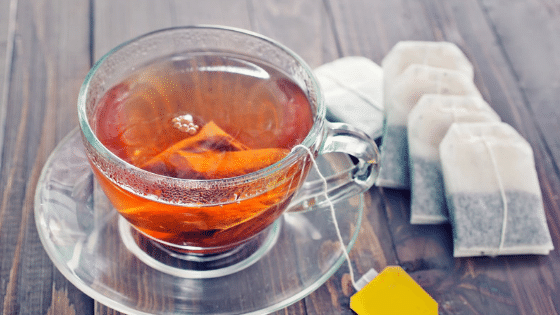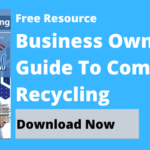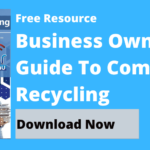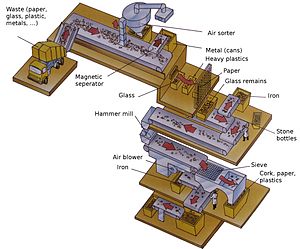Can You Recycle Tea Bags? 🍵 – And What You Need To Know!
Energy Disrupter
Can You Recycle Tea Bags? 🍵: We look at your favourite cuppa and why you should maybe think about not using plastic tea bags due to microplastics leaching in water.
Tea packaging comes in different variants: paper, silk and plastic. Most tea bags are made from paper, with a small amount of plastic used to seal them shut. It is this mixed material that causes real recycling issues.
Evidently, premium brands have switched to using greater amounts of plastic mesh for their products instead.
In our environments, such as tap and bottled waters, and in some foods that we eat such as sea salt, microplastics have been widely found. A Canadian study by Nathalie Tufenkji showed that a single plastic tea bag contains 11.6 billion microplastics and 3.1 billion nano plastics. This was for samples of water heated or steeped at 95 degrees Celsius for five minutes. In this study, the samples included four different commercial tea bags from Montreal shops and cafes.
>Download Now: Free PDF Business Owners Guide To Commingled Recycling Bin Services
Uncut tea bags served as controls to check it wasn’t the cutting that was causing the leaching of microplastics. Particles released from the teabag packaging are several orders of magnitude higher than plastic loads previously reported in other foods.
Comparison
Let us first use a simple comparison to emphasise why it is important to recycle tea bags.
To illustrate, there are 0.005 micrograms of microplastics per gram of table salt versus 16 micrograms with just one cup of tea. A stark contrast indeed. See our recent blog on the similar aspect of baby wipes.
To test for possible toxicity, Tufenkji’s and her colleagues exposed water fleas to contaminated water. Results included significant behavioural effects and developmental malformations although the particles did not kill the water fleas.
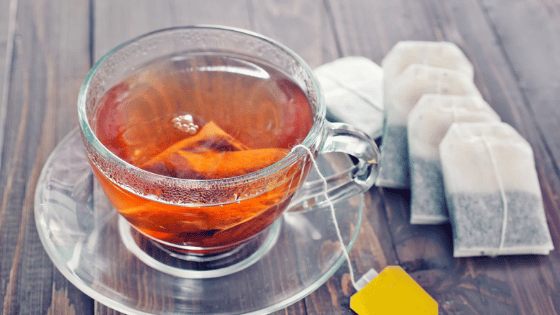

In conclusion, the report concludes that it is still unclear with regard to potential health risks in humans.
Recycle tea bags: analysing results
Amounts released compared to recorded studies into things like bottled water, Laura Hernandez, says they were surprised by the results. She says the discrepancy could be in part due to the fact they focused on the tiniest of particles. Hernandez and her team did not disclose the particular tea brands used in their study. See our blog on microbeads and their impact on the environment.
“The consumer should avoid plastic packaging, not a specific brand, and definitely not the tea that comes inside,” she said in an email. “We encourage consumers to choose loose teas that are sold without packaging or other teas that come in paper tea bags.”
“There is really no need to package tea in plastic, which at the end of the day becomes single-use plastic,” she said. “[And] which is contributing to you not just ingesting plastic but to the environmental burden of plastic.”
According to Hernandez, there is simply no need for tea producers to use plastic in their packaging because they have so many other options. The study also found that far fewer particles were released when the tea bag was steeped at room temperature for five minutes.
What you need to know about microplastics
Before you try to learn how you can recycle your tea bags, you must first discover the dangers of microplastics.
According to Wikipedia, microplastics are very small pieces of plastic that pollute the environment. Microplastics are not a specific kind of plastic, but rather any type of plastic fragment that is less than 5 mm in length according to the U.S. National Oceanic And Atmospheric Administration (NOAA). They enter natural ecosystems from a variety of sources, including cosmetics, clothing and industrial processes.
See our blog on the latest tech in the waste and recycling industry in Australia.
Two classifications of microplastics currently exist. Primary microplastics are any plastic fragments or particles that are already 5.0 mm in size or less before entering the environment.
Meanwhile, secondary microplastics are created from the degradation of larger plastic products once they enter the environment through natural weathering processes. Plastics degrade slowly, often over hundreds if not thousands of years. This increases the probability of microplastics ingestion and incorporation and accumulation in the bodies and tissues of many organisms.
Microplastics, defined as small (less than 5 mm in length) pieces of any kind of plastic debris, have been found in rivers, lakes, drinking water supplies and bottled water.
According to the World Health Organization (WHO), microplastics in drinking water do not appear to pose a health risk at current levels. In its first-ever report on the issue, the WHO says microplastics do not appear to pose a health risk at current levels but adds that much more research is needed.
As a result, one would obviously think that the solution to this, of course, is to recycle plastic tea bags.
Importance of recycling: can you recycle tea bags?
According to Country Living, several tea bag brands use polypropylene, a sealing plastic, to keep their tea bags from falling apart.
The problem? You cannot recycle or biodegrade tea bags.
Eventually, it will contribute to plastic pollution as not all of it can be broken down even when you put all your used tea bags in the food waste or compost heap.
In other words, most bags use non-biodegradable polypropylene as sealants in their bags. The skeleton left behind, however, is non-biodegradable.
But even though manufacturers acknowledge the use of non-biodegradable plastic, the advice to tea drinkers is still to put their bags in compost or food waste caddie.
As more people are becoming concerned about the environment, recycling has been ubiquitous in countless areas around the world.
[embedded content]
Moreover, people have become more conscious of incorporating waste management as part of their lifestyles, therefore thinking of ways on how to recycle their used tea bags.
The urge to recycle ranges from using a single plastic tea bag to recycling huge amounts of plastic bottles on a day-to-day basis. Recycling is also a collective effort. As we spread the word of proper waste management, we inevitably grow to substantial numbers in helping our communities.
With ample guidance and information regarding waste segregation, we’ll have no problems whatsoever in sorting out wastes.
About Waster
Waster makes a real difference as a reputable waste management and recycling company. Waster provides an entire suite of plastic recycling and other recycling services to Australian small and medium businesses. We provide commingled recycling bins for bottles and cans.
In addition, Waster is an innovative solution for all your waste management and recycling needs. It enables you to access the lowest cost and cheapest bin collection, removal and disposal prices available in the Australian garbage and recycling market.
Requiring no lock-in contracts, no unjustified rate increases and no hidden costs and operating in all metro regions throughout Australia, Waster provide lots more information on topics from blogs such as “can you recycle tea bags?” to soft plastic recycling.


